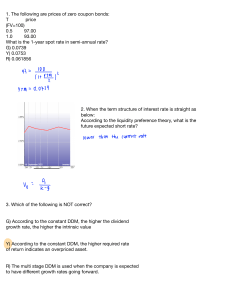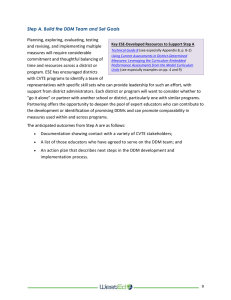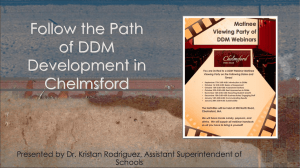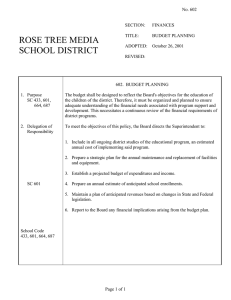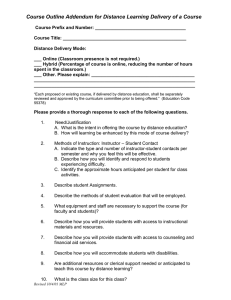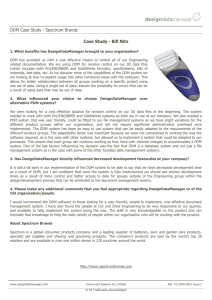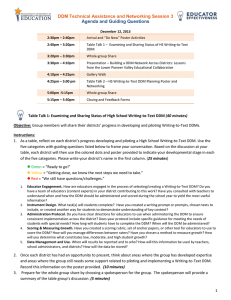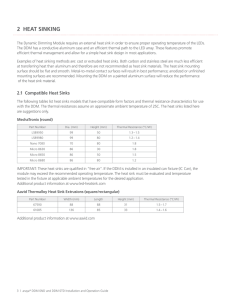appendixD 1
advertisement
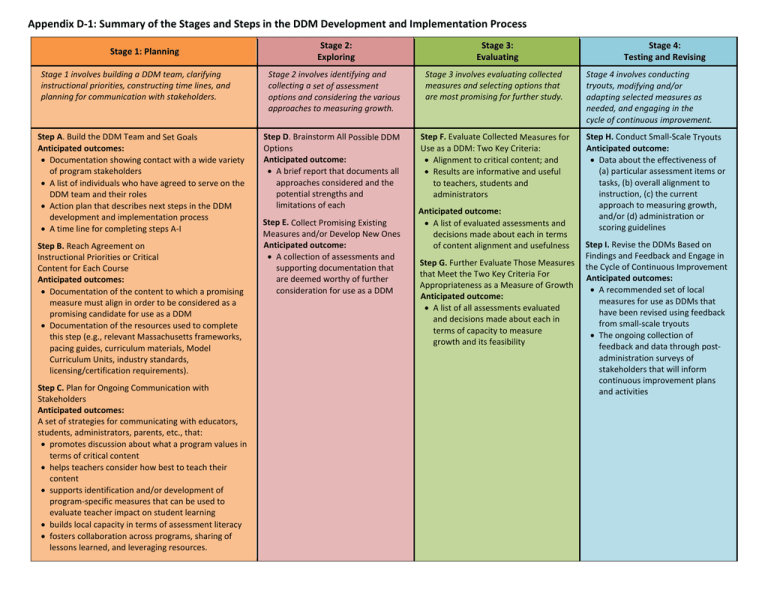
Appendix D-1: Summary of the Stages and Steps in the DDM Development and Implementation Process Stage 1: Planning Stage 1 involves building a DDM team, clarifying instructional priorities, constructing time lines, and planning for communication with stakeholders. Step A. Build the DDM Team and Set Goals Anticipated outcomes: Documentation showing contact with a wide variety of program stakeholders A list of individuals who have agreed to serve on the DDM team and their roles Action plan that describes next steps in the DDM development and implementation process A time line for completing steps A-I Step B. Reach Agreement on Instructional Priorities or Critical Content for Each Course Anticipated outcomes: Documentation of the content to which a promising measure must align in order to be considered as a promising candidate for use as a DDM Documentation of the resources used to complete this step (e.g., relevant Massachusetts frameworks, pacing guides, curriculum materials, Model Curriculum Units, industry standards, licensing/certification requirements). Step C. Plan for Ongoing Communication with Stakeholders Anticipated outcomes: A set of strategies for communicating with educators, students, administrators, parents, etc., that: promotes discussion about what a program values in terms of critical content helps teachers consider how best to teach their content supports identification and/or development of program-specific measures that can be used to evaluate teacher impact on student learning builds local capacity in terms of assessment literacy fosters collaboration across programs, sharing of lessons learned, and leveraging resources. Stage 2: Exploring Stage 3: Evaluating Stage 2 involves identifying and collecting a set of assessment options and considering the various approaches to measuring growth. Stage 3 involves evaluating collected measures and selecting options that are most promising for further study. Step D. Brainstorm All Possible DDM Options Anticipated outcome: A brief report that documents all approaches considered and the potential strengths and limitations of each Step F. Evaluate Collected Measures for Use as a DDM: Two Key Criteria: Alignment to critical content; and Results are informative and useful to teachers, students and administrators Step E. Collect Promising Existing Measures and/or Develop New Ones Anticipated outcome: A collection of assessments and supporting documentation that are deemed worthy of further consideration for use as a DDM Anticipated outcome: A list of evaluated assessments and decisions made about each in terms of content alignment and usefulness Step G. Further Evaluate Those Measures that Meet the Two Key Criteria For Appropriateness as a Measure of Growth Anticipated outcome: A list of all assessments evaluated and decisions made about each in terms of capacity to measure growth and its feasibility Stage 4: Testing and Revising Stage 4 involves conducting tryouts, modifying and/or adapting selected measures as needed, and engaging in the cycle of continuous improvement. Step H. Conduct Small‐Scale Tryouts Anticipated outcome: Data about the effectiveness of (a) particular assessment items or tasks, (b) overall alignment to instruction, (c) the current approach to measuring growth, and/or (d) administration or scoring guidelines Step I. Revise the DDMs Based on Findings and Feedback and Engage in the Cycle of Continuous Improvement Anticipated outcomes: A recommended set of local measures for use as DDMs that have been revised using feedback from small‐scale tryouts The ongoing collection of feedback and data through post‐ administration surveys of stakeholders that will inform continuous improvement plans and activities
